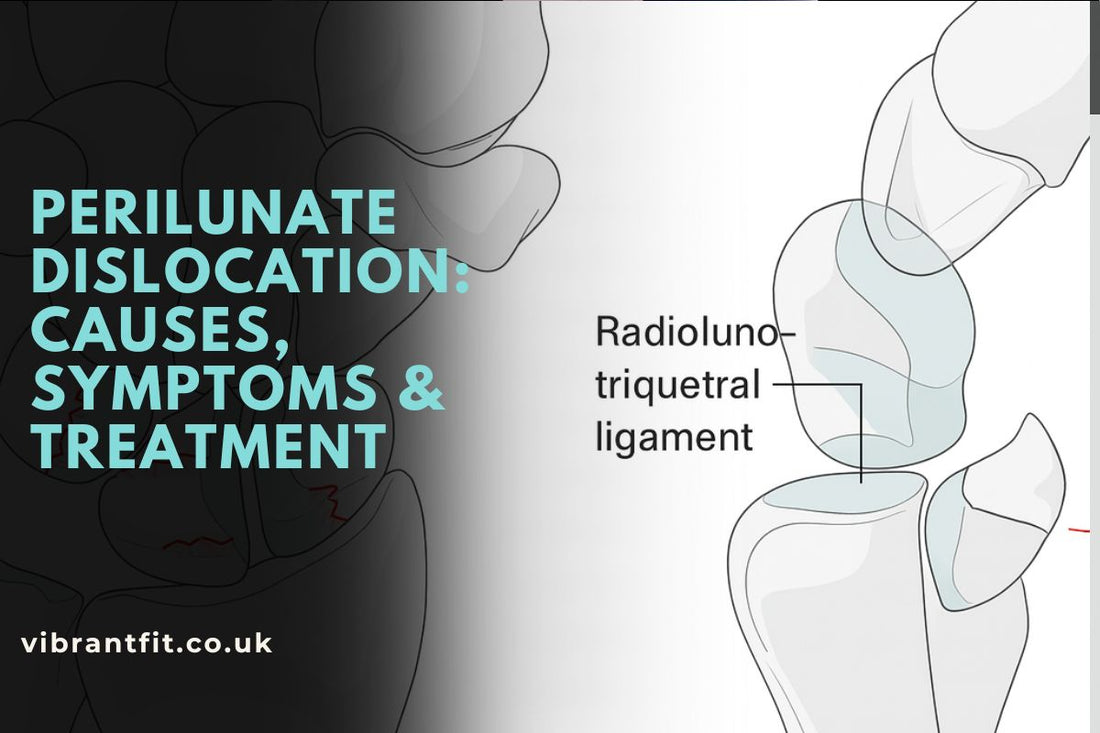
What is Perilunate Dislocation?
Share
Imagine catching yourself during a fall, landing heavily on your hand. That sudden jolt can cause more than just a bruise—it might lead to a perilunate dislocation, a serious wrist injury where the tiny bones around the lunate shift out of place. This type of injury is not very common, so it can be easy to miss or mistake for something less severe. Because it often hides on X-rays, recognizing the signs early is vital. Acting quickly can make all the difference in protecting your wrist and preventing lasting damage. This article will guide you through what perilunate dislocation is, how it happens, and what you can do if you suspect you have one.
What is Perilunate Dislocation?
Perilunate dislocation is a severe wrist injury where the small bones surrounding the lunate bone become misaligned. This injury typically results from high-impact trauma and can cause significant pain, swelling, and instability in the wrist. Without prompt treatment, perilunate dislocation carries a high risk of complications such as median nerve palsy, pressure necrosis, compartment syndrome, and lasting wrist dysfunction. Catching this injury early and getting prompt medical help is vital to avoid lasting damage and keep your wrist working properly.
Common Causes of Perilunate Dislocation

This wrist injury usually happens because of a sudden, powerful impact or force hitting the wrist.
-
Falling onto an outstretched hand (a very common cause)
-
Sports injuries, especially in contact or high-speed sports like football or skiing
-
Car accidents or other blunt force trauma to the wrist
-
Work-related accidents involving heavy machinery or falls
Because the injury often happens suddenly and with significant force, it’s important to take any wrist trauma seriously.
Symptoms to Watch For

If you have a perilunate dislocation, you may notice:
-
Severe wrist pain and tenderness, especially on the top side
-
Swelling and bruising around the wrist
-
Difficulty moving your wrist or fingers
-
A visible deformity or abnormal wrist shape in some cases
-
Numbness or tingling if nerves are compressed
If you experience these symptoms after an injury, getting prompt medical evaluation is important.
Treatment of Perilunate Dislocation

Treating a perilunate dislocation requires prompt and careful medical attention. In most cases, doctors will perform a procedure called reduction to realign the displaced bones. This may be done without surgery, but often surgery is necessary to properly repair torn ligaments and stabilize the wrist. After the bones are back in place, the wrist is usually immobilized with a cast or splint for several weeks to allow healing. Physical therapy typically follows to restore movement, strength, and flexibility. Recovery can take several months, and close follow-up is important to monitor for complications and ensure the best possible outcome.
Also read : subluxation vs dislocation
Recommended Wrist Support Products for Perilunate Dislocation Recovery
Supporting your wrist properly is essential during recovery from a perilunate dislocation. Several wrist braces from VibrantFit can help provide stability, reduce pain, and protect your wrist as it heals. The VibrantFit TFCC Support Wrist Brace is especially useful for managing wrist pain on the ulnar side and offers firm support while allowing comfortable movement. For overall wrist stability, the VibrantFit UltraFlex Wrist Brace and the VibrantFit Performance Wrist Brace provide lightweight, breathable support ideal for daily wear or physical activity. If your injury involves the thumb area or requires additional immobilization, the VibrantFit ErgoThumb Spica Splint offers targeted support to ease strain and promote healing. Using the right brace can be a key part of your treatment plan alongside medical care and physical therapy.
Conclusion
Perilunate dislocation is a serious wrist injury that requires prompt medical attention to avoid lasting complications. With early diagnosis, proper treatment, and supportive care—including the use of wrist braces and physical therapy—many people can regain function and reduce pain. If you experience wrist pain or injury after trauma, seeking timely professional help is essential for the best recovery outcome.
